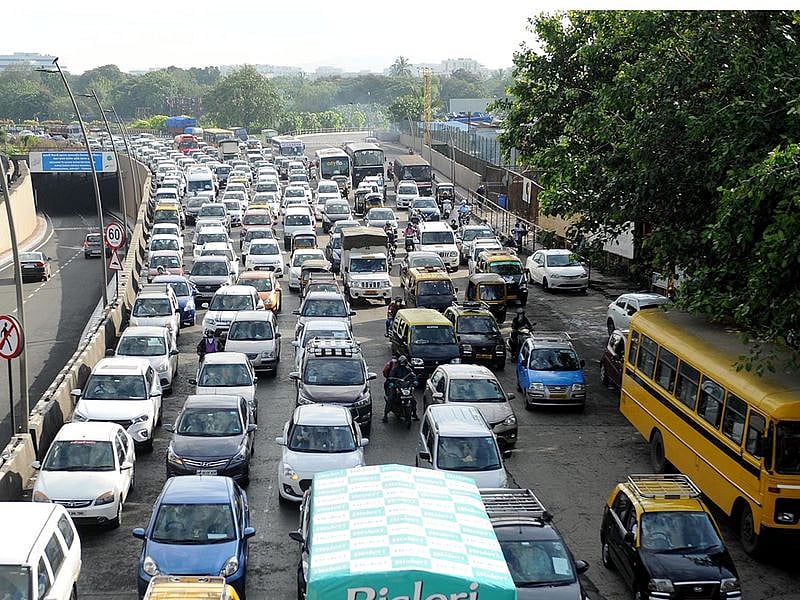Mumbai to go ‘traffic-free’ in three years as MMRDA plans 70-km tunnels
Fadnavis describes tunnel system as ‘pataal lok’ — underground web of corridors

Mumbai: Maharashtra Chief Minister Devendra Fadnavis has announced an ambitious three-year plan to make Mumbai “traffic-free,” backed by a sweeping network of underground tunnels, parallel roads and high-speed corridors designed to ease the city’s crippling congestion.
The push coincides with the Mumbai Metropolitan Region Development Authority’s (MMRDA) launch of a Detailed Project Report (DPR) for a new 70-km underground tunnel road system, billed as a transformative “third mode of mobility” for the metropolis.
Speaking at a BJP ‘Youth Connect’ programme, Fadnavis described the upcoming tunnel system as a “pataal lok” — an underground web of fast-moving corridors that he said would permanently ease the strain on Mumbai’s overburdened road network.
60% of traffic sits on WEH — parallel roads, tunnels to relieve burden
Fadnavis said nearly 60% of Mumbai’s traffic load currently depends on the Western Express Highway (WEH), making parallel corridors essential. The government is now constructing new road links that will allow speeds of up to 80 kmph, compared to the current 20–15 kmph average during peak hours.
Mumbai’s new mobility plan — key projects at a glance
Fadnavis’ 3-Year “Traffic-Free Mumbai” Plan
City-wide underground tunnel network described as “pataal lok”
Parallel highways to relieve pressure on existing routes
Thane–Borivali and Mulund–Goregaon tunnels to boost east–west links
WEH parallel road between Borivali and Goregaon for high-speed travel
Worli–Sewri bridge connecting directly to Atal Setu and Navi Mumbai Airport
New Bandra-Worli Sea Link extension to BKC and airport
Goal: Reduce south Mumbai–airport travel time to 20 minute
MMRDA’s 70-km underground tunnel network (DPR stage)
Phase 1: 16-km Worli–airport tunnel
Phase 2: 10-km East–West connector
Phase 3: 44-km North–South corridor
Integrated linkages with coastal road, metros and major corridors
Estimated cost: ₹1.05 lakh crore
Aims for Tokyo/Singapore-style multi-level mobility system
Geological, environmental, and socio-economic studies underway
A series of major tunnel projects—from Thane to Borivali, Mulund to Goregaon, and a new underground link from the end of the Eastern Freeway to Girgaum Chowpatty—are expected to vastly enhance east-west and north-south connectivity.
The CM also highlighted new infrastructure integrating suburban Mumbai with the coastal road and Atal Setu, including a bridge from Worli to Sewri and an extended corridor connecting the Bandra-Worli Sea Link to the Bandra-Kurla Complex (BKC) and further to the airport.
Once complete, Fadnavis said, travel time from south Mumbai to the airport will drop to about 20 minutes.
MMRDA begins work on 70-km underground tunnel DPR
In a parallel development reported by Times of India, the MMRDA has begun drafting a DPR for a 70-km network of underground tunnels, aimed at establishing a multi-level, integrated mobility grid across Mumbai.
The tunnel system — envisioned as the city’s third major transportation tier after roads and metros — will be executed in three phases: Phase 1: 16-km Worli–airport link; Phase 2: 10-km East–West connector and Phase 3: 44-km North–South corridor
The project is estimated to cost ₹1.05 lakh crore (Rs1,000 billion or Rs1 trillion) and would place Mumbai alongside global cities such as Tokyo and Singapore, which operate extensive underground mobility networks.
MMRDA chief Sanjay Mukherjee said the tunnels will decongest surface roads, improve cross-city travel and deliver seamless integration with existing metro and coastal road systems.
Comprehensive studies on geology, environment, social impact and design are underway, with phased execution planned based on traffic demand and feasibility.
A vision to transform Mumbai into a global economic powerhouse
Fadnavis reiterated that Mumbai’s rise as a global economic hub depends on its ability to move people and goods efficiently. The combined initiatives—underground tunnels, parallel highways, coastal road integration and airport-linked corridors—form the backbone of the government’s sweeping mobility vision for the next decade.
-- With IANS inputs
Sign up for the Daily Briefing
Get the latest news and updates straight to your inbox
Network Links
GN StoreDownload our app
© Al Nisr Publishing LLC 2025. All rights reserved.
